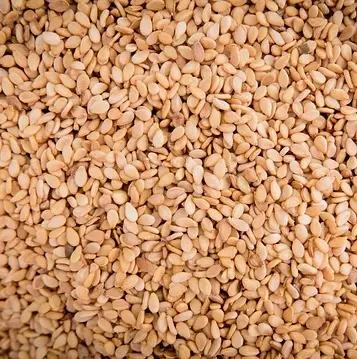Oral sesame desensitization shown to be safe for children with allergy
Recent data, presented at the AAAAI annual meeting, showed that oral sesame desensitization through crushed seeds and tahini was efficacious and safe for pediatric patients.
Recent data, presented at the AAAAI annual meeting, showed that oral sesame desensitization through crushed seeds and tahini was efficacious and safe for pediatric patients.

New data presented at the American Academy of Allergy, Asthma & Immunology (AAAAI) 2023 Annual Meeting in San Antonio, TX, indicated oral sesame desensitization was safe and effective for younger patients with allergies.1
An emerging option for food allergy treatment, oral desensitization was a process that had sparse data on patient outcomes in the US.
The study was authored by Ami Shah, MD, from the Icahn School of Medicine at Mount Sinai in New York, and involved a retrospective chart review of data on pediatric patients.
These younger patients had been treated with oral desensitization to sesame/tahini at a pediatric food allergy referral center.
The study included data from 86 patients, all of whom had a median age of 5 years. The process had an initial low dose oral food challenge (OFC) using incremental dose escalation of crushed sesame seeds/tahini.
The OFC dose escalated up until the patients were on a maintenance dose of usually 1 teaspoon of tahini (i.e. 1000 mg of sesame protein).
Of the 86 pediatric patients, 59.3% (51) were found to have achieved maintenance and 30.2% (26) remained in the build-up phase. The investigators noted that 10.5% (9) decided to discontinue the process due to uncontrolled asthma, various reactions, daily dosing challenges, or reasons that were unknown.
During the study, the research team found that 29.1% of the patients (25) had allergic reactions with daily dosing, but only 1 of the reactions required epinephrine.
Of the 10 patients who were able to reach maintenance dosing, each of them also completed a full dose OFC to 1 tablespoon of tahini (i.e. 3000 mg of sesame protein). The team added that all ended up with negative OFCs (100%).
These 10 patients then were given a sustained unresponsiveness OFC to a single tablespoon of tahini following the discontinuation of daily sesame dosing for 4 to 6 total weeks. The investigators added that 100% had negative results.
This article was originally published by our sister publication HCP Live.
Reference
- Shah A, et al. Sesame Oral Desensitization Outcomes in a Pediatric Cohort. The Journal of Allergy and Clinical Immunology. Published online February 21, 2022. Accessed March 1, 2023. https://www.jacionline.org/article/S0091-6749(22)02037-1/fulltext#articleInformation.